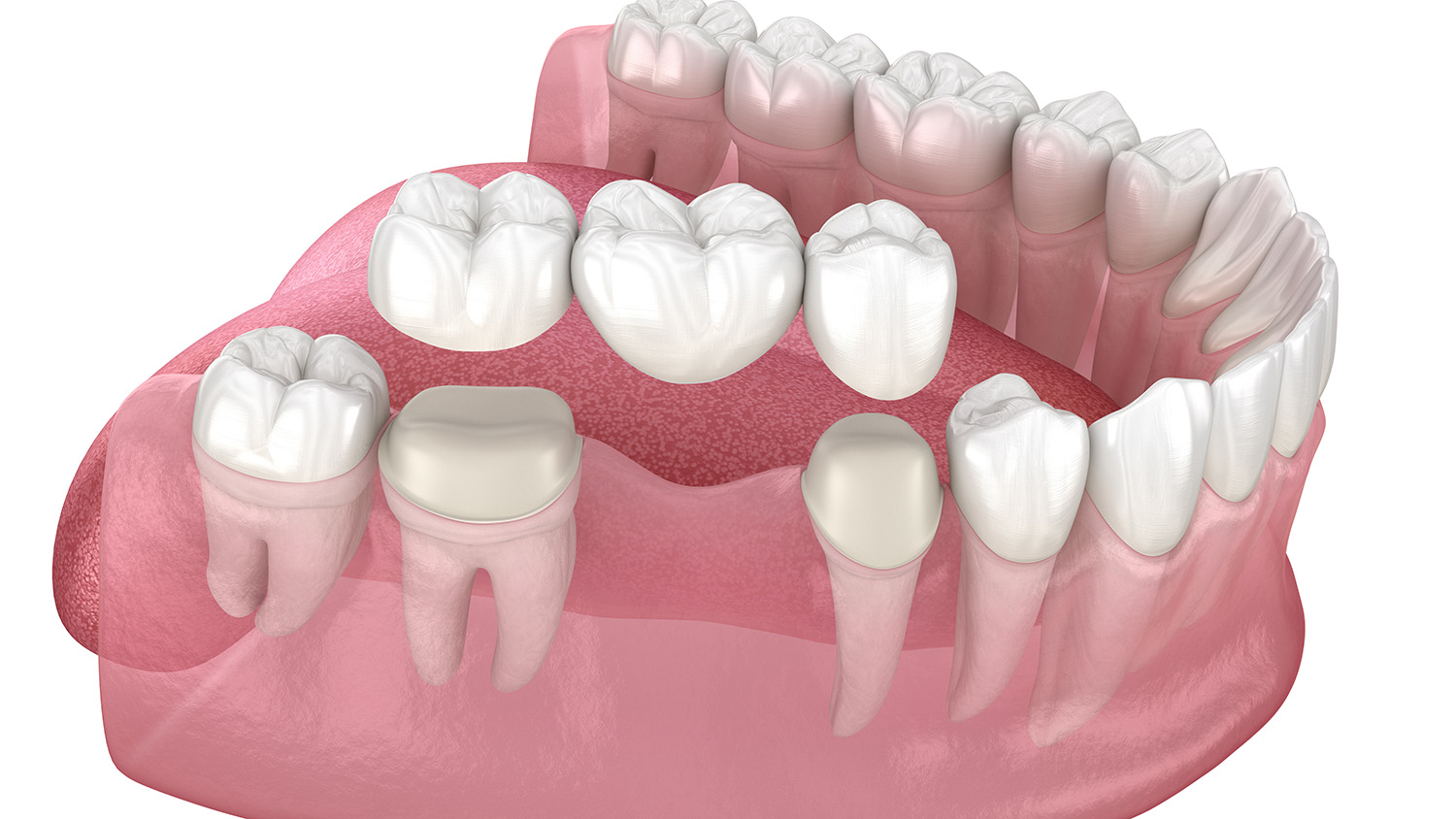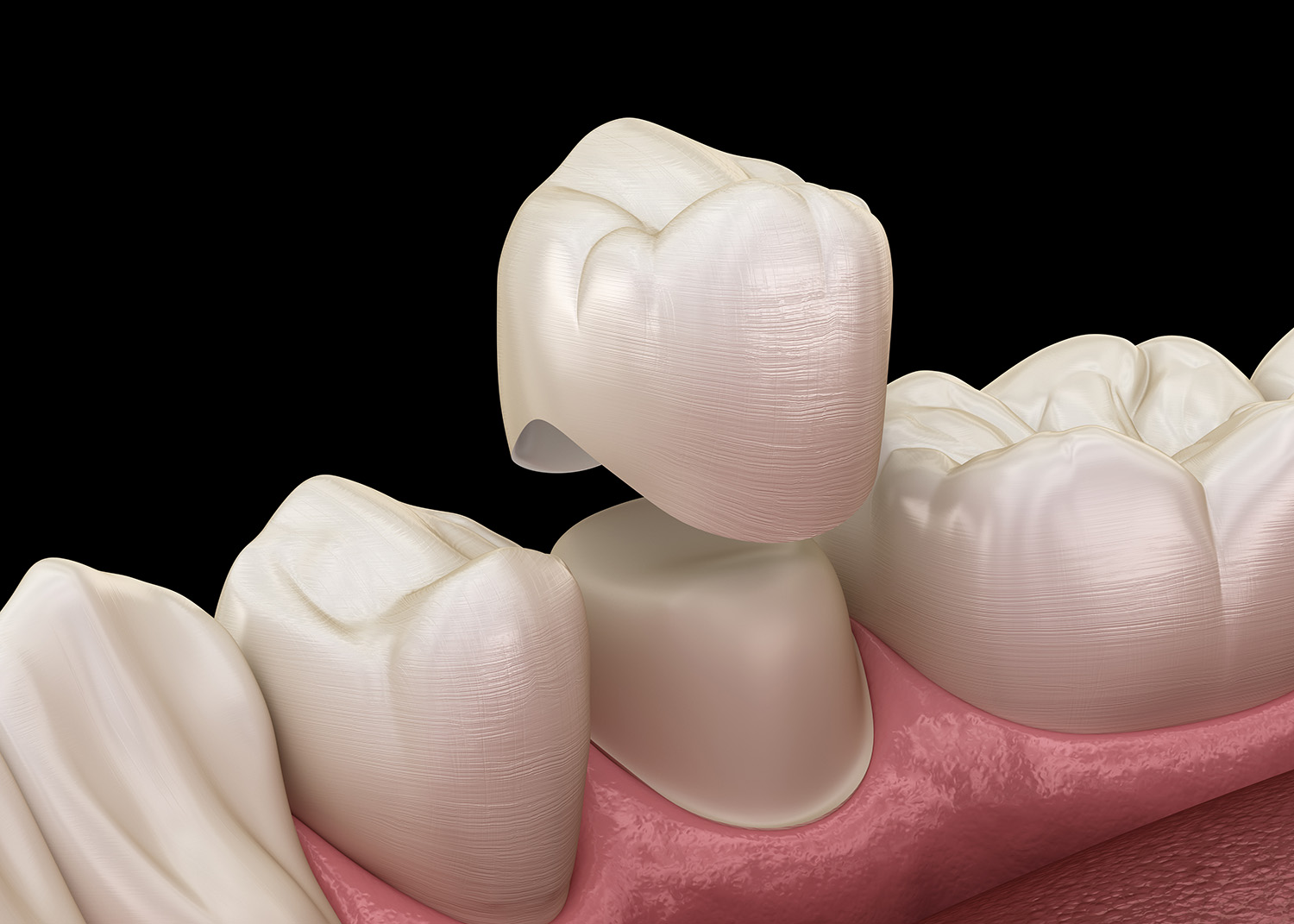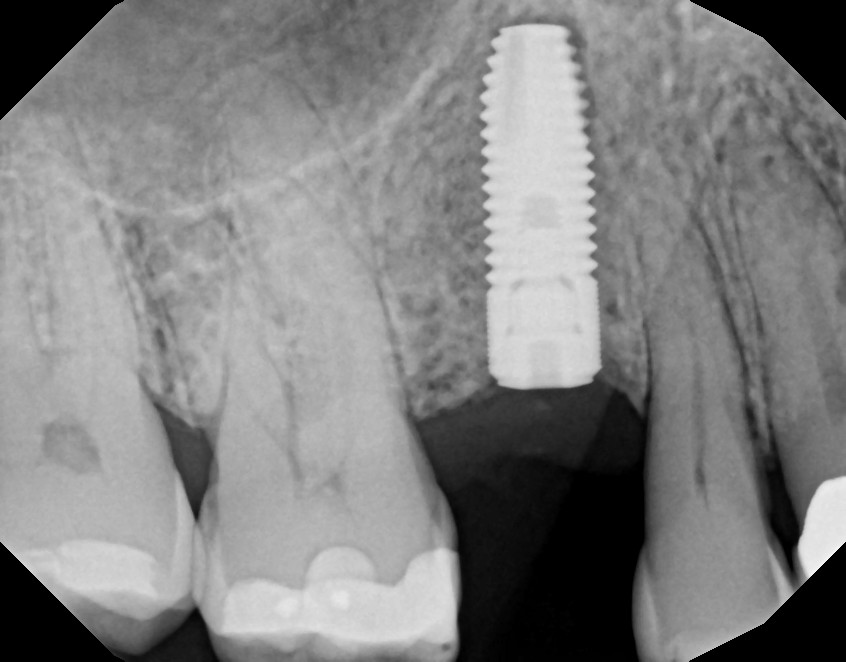Are you in need of a dental crown or a dental bridge? Crowns and bridges are common dental solutions, but they each serve different purposes. If you’re considering either procedure, knowing what to expect and what each option offers is important. Here’s what you need to know before getting a bridge or a dental crown.
4 Things to Know About Getting a Dental Bridge
Dental bridges are commonly used to replace one or more missing teeth. These dental devices have artificial teeth made from either resin or porcelain. They consist of anchor crowns and a pontic (artificial tooth). The crowns keep the device anchored to your natural teeth.

Depending on how many teeth you’re replacing, the crown may cover two or more teeth. When fitted properly, bridges blend in nicely and naturally with your smile.
If you’re considering a dental bridge, there are some crucial things you should know:
1. There are Many Types of Dental Bridges
There are four main types of dental bridges:
- Cantilever: With this type of bridge, the pontic connects to just one abutment tooth. If you only have natural teeth on one side of the gap, a cantilever bridge may be an option for you.
- Traditional fixed: The most common type of bridge. Traditional bridges consist of at least two crowns and filler teeth, which are all connected. The crowns fit over the abutment teeth to keep the bridge in place.
- Maryland dental bridge: A Maryland dental bridge is ideal for replacing missing front teeth. They consist of either ceramic or porcelain fused to metal teeth, and they are supported by a sturdy framework. The wings on either side of the framework are bonded to your natural teeth.
- Implant-supported bridge: Just as the name suggests, an implant-supported bridge is a bridge that’s supported by implants. These implants are very similar to traditional bridges, but instead of being cemented onto teeth, they are supported by implants.
Understanding the types of dental bridges available will help you make a more informed decision. We may also provide recommendations to help you find a solution that will work best for your smile.
2. The Procedure Requires at Least Two Appointments
Getting dental bridges is a straightforward process, but it’s still one that requires at least two appointments.
Here’s how the process normally works:
- First, we’ll prepare the abutment teeth. Reshaping the abutment teeth will make room for the crown.
- Next, we’ll take impressions of your teeth. Those impressions will be sent to a lab and used to make a model of your bridge, crowns and false teeth. In the meantime, we’ll place a temporary bridge to protect the exposed areas of your mouth.
- Finally, we’ll place the permanent bridge. Once we receive your bridge back from the lab, we’ll remove the temporary one and place the permanent one. We’ll check the bridge to make sure it fits properly and make adjustments as needed.
While there are multiple steps involved in the process, the end result is a bridge that looks natural and helps restore your smile.
3. Bridges are Long-Lasting
When cared for properly, dental bridges can last 5-7 years or more. If you’re coming for regular exams and cleanings, your bridge may last more than a decade.
There are several factors that will affect the longevity of your bridges, including:
- Diet: Eating hard foods can increase the risk of chips and damage to your bridges.
- Oral hygiene: Brushing twice a day, flossing once a day and coming in for regular cleanings will help extend the life of your bridge.
- Material: Bridges may be made of porcelain, resin or other materials. The materials you choose will affect the lifespan of your bridge.
Take care of your dental bridge and it will take care of you.
4. Bridges Can Make Eating and Speaking Easier
Many patients worry that bridges will make it more difficult to eat or speak. While it may take a little bit of time to adjust to this dental device, most people find that talking and eating are much easier with a dental bridge.
If you’re concerned about discomfort, try eating soft foods until you get used to the bridge.
4 Things to Know About Getting a Dental Crown
Dental crowns are another option for dental restoration, but they function differently than a dental bridge.
Like bridges, crowns are a long-lasting restoration option, lasting 5-15 years on average.

1. A Dental Crown Can Repair a Damaged Tooth
Dental crowns can repair a damaged tooth, but they can’t be used to replace a missing one. We may recommend a crown if your tooth is:
- Decayed
- Weak or worn-down
- Broken
Crowns are also used to cover dental implants and teeth treated with a root canal.
2. Crowns Can Be Made From Different Materials
Like dental bridges, crowns can be made from a variety of materials, including:
Metal
Metal crowns can be made from a variety of metals, including palladium, gold, chromium and nickel. One major advantage of metal crowns is that they are very durable. They only require a minimal amount of enamel removal, and they will rarely chip or break due to their ability to withstand biting forces.
But despite all of its advantages, many people avoid metal crowns because of their appearance. Unfortunately, metal crowns are very noticeable.
Porcelain-Fused-to-Metal
Porcelain-fused-to-metal crowns offer the durability of metal crowns and the natural appearance of porcelain. They have a metal framework and a porcelain exterior, which allows them to blend in with your smile.
These crowns can be made to match your natural teeth. But there are some drawbacks that should be considered. For example, the porcelain may chip over time and expose the metal framework underneath.
These crowns can also wear down the enamel on opposing teeth.
That said, porcelain-fused-to-metal crowns can last a very long time - just as long as all-metal. And they can also be used to restore just about any tooth in your mouth.
Porcelain or Ceramic
Porcelain is one of the most popular and sought-after materials for crowns. Why? Because porcelain is highly durable, stain-resistant and can be made to match your natural teeth.
With proper care, porcelain crowns can last about 15 years.
Ceramic crowns can also be made from zirconium dioxide, and these are known as zirconia crowns.
Zirconia crowns are incredibly durable and can withstand even heavier forces than porcelain. They’re also gentler on neighboring teeth, which results in less enamel wear.
All-Resin
All-resin crowns are the most affordable option, but they’re also the least durable. On average, resin crowns last about three to five years.
3. Crowns Require At Least Two Appointments
Like dental bridges, crowns also require at least two appointments. While some patients may have unique circumstances, the process usually involves:
Initial Appointment
Most of the work will be done during the first appointment. First, we’ll numb the area and start preparing your tooth for the crown. Shaping your tooth will make it easier to fit the crown properly and allow it to remain securely in place.
Up to 75% of the tooth may be removed for crown placement.
Once we have the ideal shape for your tooth, we’ll take an impression to get the perfect fit for your crown. We’ll also take a bite impression to ensure you can bite and chew properly and comfortably.
Before you leave, we’ll place a temporary crown. But first, we will do a color matching to ensure your new crown blends in naturally with your smile.
Your impressions will be sent off to the lab, which will create your new crown. The process can take one to two weeks.
Follow-Up
Once your crown arrives, we can place it. The first step is to numb the area. Next, we’ll remove the temporary crown and fit the permanent crown. We’ll check to make sure that the fit and appearance are proper.
We may need to remove and adjust the crown a few times to get that perfect fit. Then, we’ll cement it in place and wait for the cement to set. After scraping away the excess cement, you’ll be ready to leave the office and enjoy your new smile.
Getting a crown is a straightforward process, and most patients sail through it without any discomfort.
4. Crowns Require Proper Care
A dental crown doesn’t necessarily require any special care, but if you want it to last as long as possible, it’s important to:
- Maintain a healthy oral care routine. Make sure that you’re brushing at least twice a day, flossing once a day and coming in for regular cleanings.
- Avoid eating hard or chewy foods at first. Even after you’ve healed, it’s best to avoid eating these foods, as they can damage or even dislodge the crown.
Taking good care of your crown will ensure that it lasts.
Final Thoughts
Whether you need a dental crown or a dental bridge, you can rest assured that you’re taking big steps to protect your oral health. We’ll help you find the right solution for your dental needs and make the procedure as comfortable as possible.
Contact us today to make an appointment and discuss your needs!







